Robert Johnson and the Hot Tamale Connection
The history of the blues, Robert Johnson, and the tamale are fascinating and interlocked. Let’s start with the blues – a uniquely American form of music that reflects personal longing and historic strife.
The roots of the blues began in the Mississippi Delta – an area that extends from Vicksburg Mississippi to Memphis Tennessee. There, on cotton plantations, enslaved laborers struggled under dire conditions, unfathomable to most Americans today. One of their resources for survival were a confluence of songs rooted in their Western Africa cultures that they sung in the fields in unified voices, call-and-response interactions, and individual hollers.
The enslaved workers used these songs as a form of distraction and resistance, the words passing important information across the fields, unbeknownst to the slaveholders. Eventually, the enslaved and later freed African Americans attended church where these songs found a natural place. Unlike the European Americans formal prayer, their singing was impassioned, with heartfelt clapping and stomping. By the 1870s, these songs were recognized as the “Negro Spiritual” and about 30 years later, the blues.
Enter Robert Johnson and The Red Hots
In 1911, slavery in the Mississippi Delta was long gone but the vestiges lived on. The brutal institution of sharecropping prevailed and the Ku Klux Klan and Jim Crow laws were formidable constraints. It was in this environment, and the associated poverty, hunger and illiteracy that Robert Johnson was born.
Where Johnson got his start in music is anyone’s guess, but it grew at the Saturday night dances where he watched the first generation of blues masters, such as Willie Brown and Charley Patton, play. Eventually, Johnson took to the road, where he played on street corners and in juke joints – one of the few venues for African American blues musicians in the rural South. His talent was so stunning, it ignited a rumor that he sold his soul to the devil just to get it.
Robert Johnson’s first recording was on November 23, 1936. Twenty-nine more followed the next year. His success was as immediate as his death where, at 27 years old, he was said to have been poisoned by a jealous husband who believed Johnson slept with his wife. When he died, Johnson left behind a legacy that included a playing style that changed music forever. His influence extended to the Rolling Stones, Bob Dylan, the Allman Brothers, and Eric Clapton who said: “I have never found anything more deeply soulful than Robert Johnson.”
Tamales and Hot Tamale
If you travel to parts of Vicksburg Mississippi, you find an area with an elaborate casino, now empty, and a van for transporting visitors which remains parked. The Mississippi and Yazoo rivers sluggishly move along its edges. Many of the homes are empty. Within the corner shops, small Mom and Pop restaurants, and to-go stands, you find tamales. In fact, tamales appear in all sorts of places along the Mississippi Delta.
But why tamales? These portable foods are wrapped in corn shucks, and traditionally filled with pork, or more recently beef or turkey. They may be steamed or baked, stuffed with cheese and sauce, or simply mixed with mesa or corn meal and various degrees of spices. The tamale is an old food, dating back to the Aztecs of 7000 BCE, where women served as cooks for the armies. The tamales where perfect to make: portable, easy to prepare and heat, as needed. Originally, the women buried the tamales in hot ashes – eventually they cooked or steamed them over-ground.
How the tamales got to the South is unclear: U.S. soldiers brought them back from Mexico during the American-Mexican War or when migrant Mexican workers brought them to the South. Regardless the tamale became an important food in the Mississippi Delta food culture, a favorite of the African American community with its history of struggle, and, in particular, Robert Johnson with his song: “They’re Red Hot.”
The tamales eventually became so mainstream that they were made into a candy in 1950 by Just Born. Today, they are one of the most popular spicy candies in the U.S., enjoyed by thousands of Americans unaware of its fascinating history.
They’re Red Hot
Robert Johnson
Hot tamales and they’re red hot, yes she got’em for sale
Hot tamales and they’re red hot, yes she got’em for sale
I got a girl, say she long and tall
She sleeps in the kitchen with her feets in the hall
Hot tamales and they’re red hot, yes she got’em for sale, I mean
Yes, she got’em for sale, yeah
Hot tamales and they’re red hot, yes she got’em for sale
Hot tamales and they’re red hot, yes she got’em for sale
She got two for a nickel, got four for a dime
Would sell you more, but they ain’t none of mine
Hot tamales and they’re red hot, yes she got’em for sale, I mean
Yes, she got’em for sale, yes, yeah
Hot tamales and they’re red hot, yes she got’em for sale
Hot tamales and they’re red hot, yes she got’em for sale
I got a letter from a girl in the room
Now she got something good she got to bring home soon, now
It’s hot tamales and they’re red hot, yes she got em for sale, I mean
Yes, she got’em for sale, yeah
Hot tamales and they’re red hot, yes she got ’em for sale
Hot tamales and they’re red hot, yes she got ’em for sale (they’re too hot boy)
The billy got back in a bumble bee nest
Ever since that he can’t take his rest, yeah
Hot tamales and they’re red hot, yes you got’em for sale, I mean
Yes, she got’em for sale
Hot tamales and they’re red hot, yes she got’em for sale
Man don’t mess around em hot tamales now ’cause they too black bad,
If you mess around ’em hot tamales
I’m gonna upset your backbone, put your kidneys to sleep
I’ll due to break away your liver and dare your heart to beat ’bout my
Hot tamales ’cause they red hot, yes they got em for sale, I mean
Yes, she got em for sale, yeah
Hot tamales and they’re red hot, yes she got’em for sale
Hot tamales and they’re red hot, yes she got’em for sale
You know grandma loves them and grandpa too
Well I wonder what in the world we children gonna do now
Hot tamales and they’re red hot, yes she got’em for sale, I mean
Yes she got’em for sale
Hot tamales and they’re red hot, yes she got’em for sale
Hot tamales and they’re red hot, yes she got’em for sale
Me and my babe bought a V-8 Ford
Well we wind that thing all on the runnin’ board, yes
Hot tamales and they’re red hot, yes she got’em for sale, I mean
Yes she got’em for sale, yeah
Hot tamales and they’re red hot, yes she got’em for sale (they’re too hot boy!)
Hot tamales and they’re red hot, yes, now she got em for sale
You know the monkey, now the baboon playin’ in the grass
Well the monkey stuck his finger in that old ‘Good Gulf Gas’, now
Hot tamales and they’re red hot, yes she got’em for sale, I mean
Yes she got’em for sale, yeah
Hot tamales and they’re red hot, yes she got’em for sale
Hot tamales and they’re red hot, yes she got’em for sale
I got a girl, say she long and tall
Sleeps in the kitchen with her feets in the hall, yes
Hot tamales and they’re red hot, yes she got’em for sale, I mean
Yes she got’em for sale, yeah

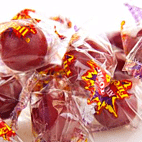

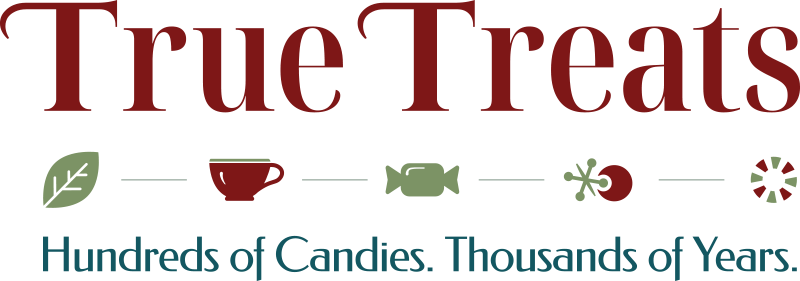
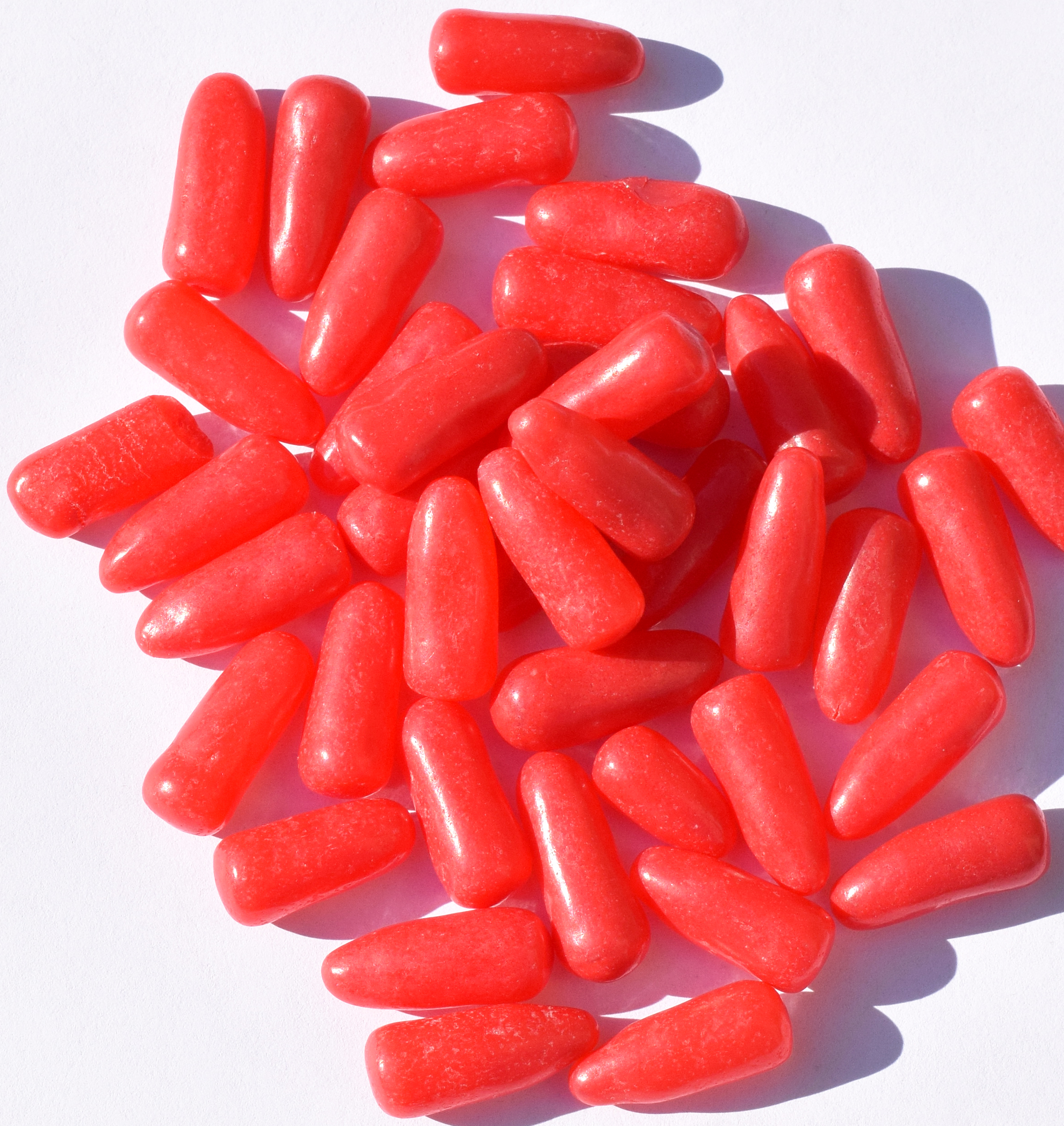

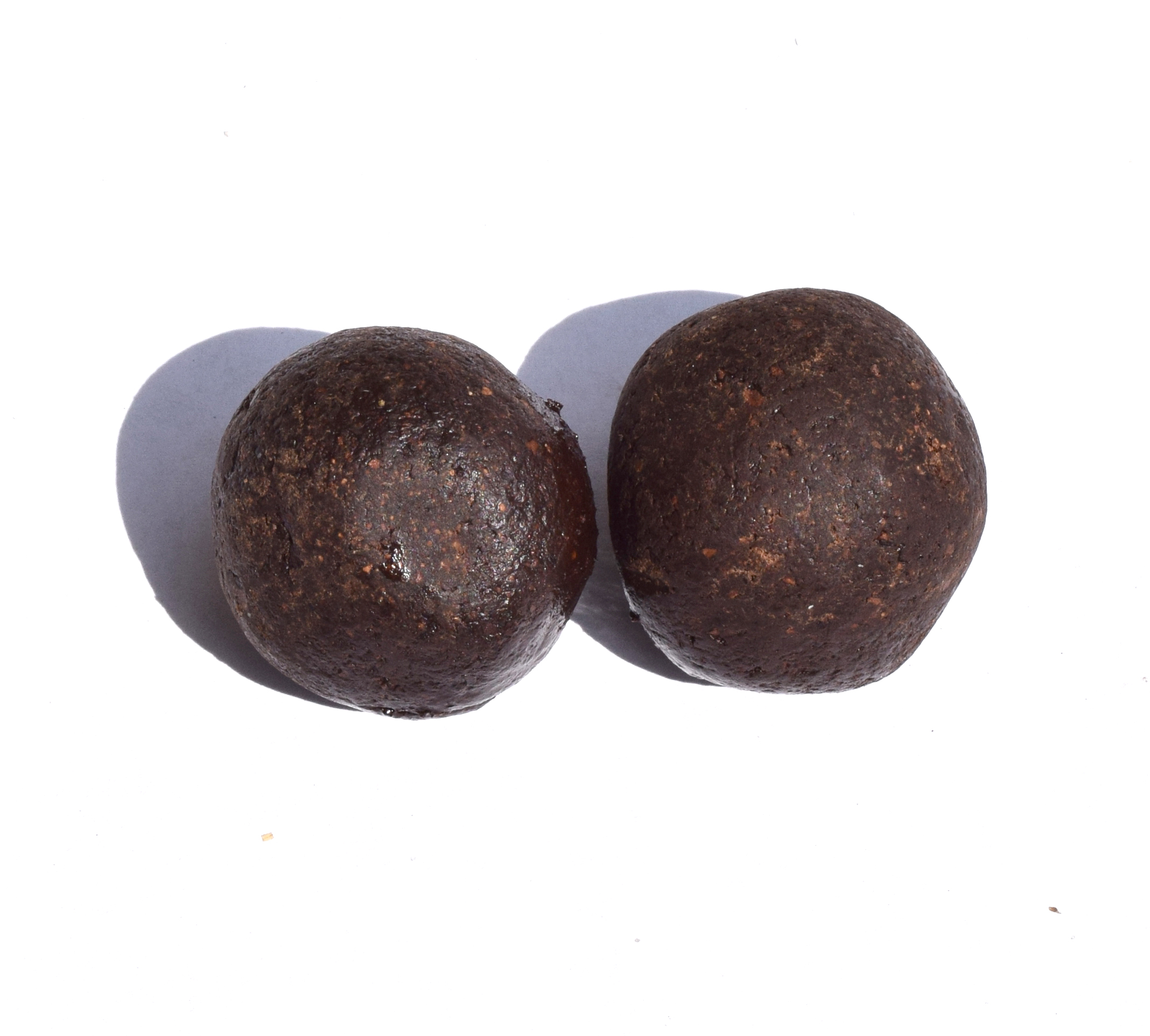
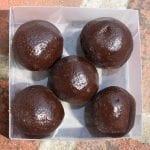

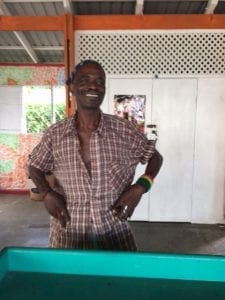 Ian Roberts is a craftsman who sells bracelets and other trinkets from a stall at the beach. He uses black coral and other natural elements which he polishes and shapes using a cigarette lighter. The results are finely crafted pieces with a rich amber hue.
Ian Roberts is a craftsman who sells bracelets and other trinkets from a stall at the beach. He uses black coral and other natural elements which he polishes and shapes using a cigarette lighter. The results are finely crafted pieces with a rich amber hue.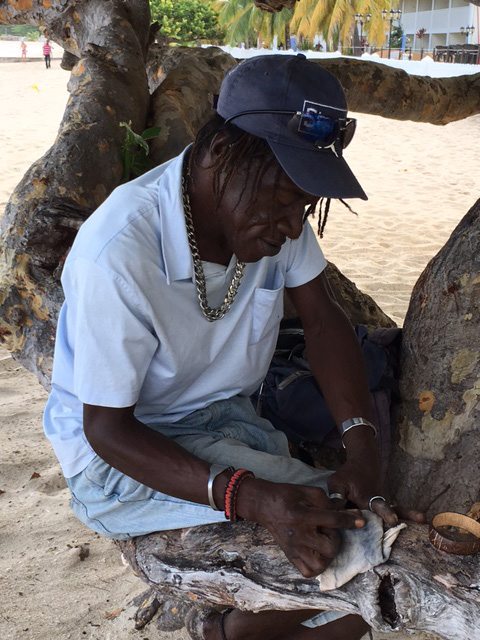
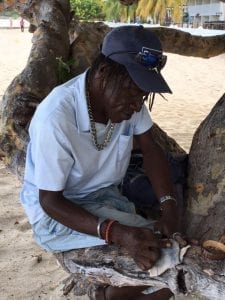 Alvin Heinz spends much of his day in a tree outside the Radisson Hotel at the Grand Anse beach or at St. Georges when the cruise ships come in. He carves coconut shells into polished dolphins, palm trees, nutmegs, and other medallions which he sells to tourists. His job, he says, is to make sure they have a good time on the island. When they come, he says, they bring money.
Alvin Heinz spends much of his day in a tree outside the Radisson Hotel at the Grand Anse beach or at St. Georges when the cruise ships come in. He carves coconut shells into polished dolphins, palm trees, nutmegs, and other medallions which he sells to tourists. His job, he says, is to make sure they have a good time on the island. When they come, he says, they bring money.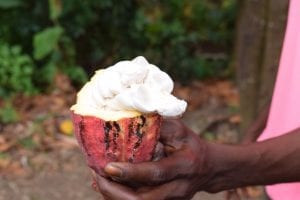
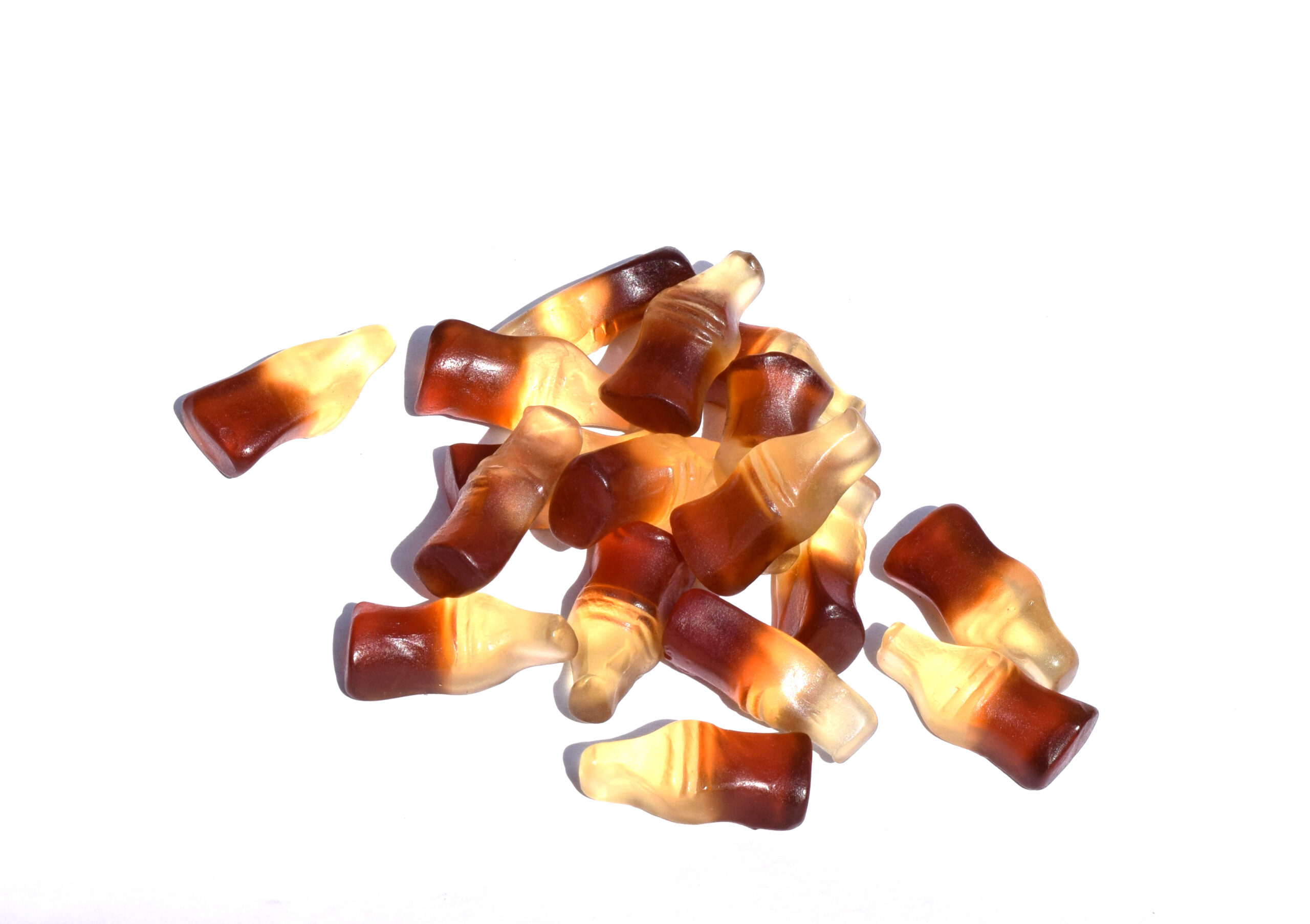

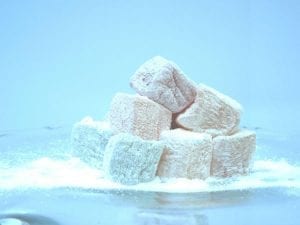


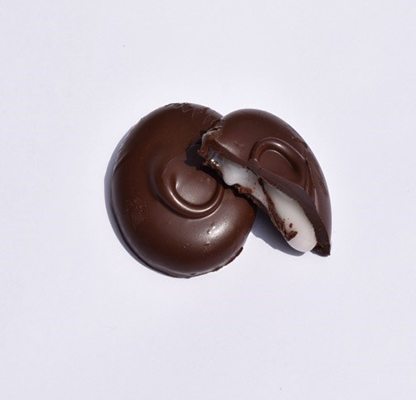





 “Without working, you cannot inherit your part in life.”
“Without working, you cannot inherit your part in life.”



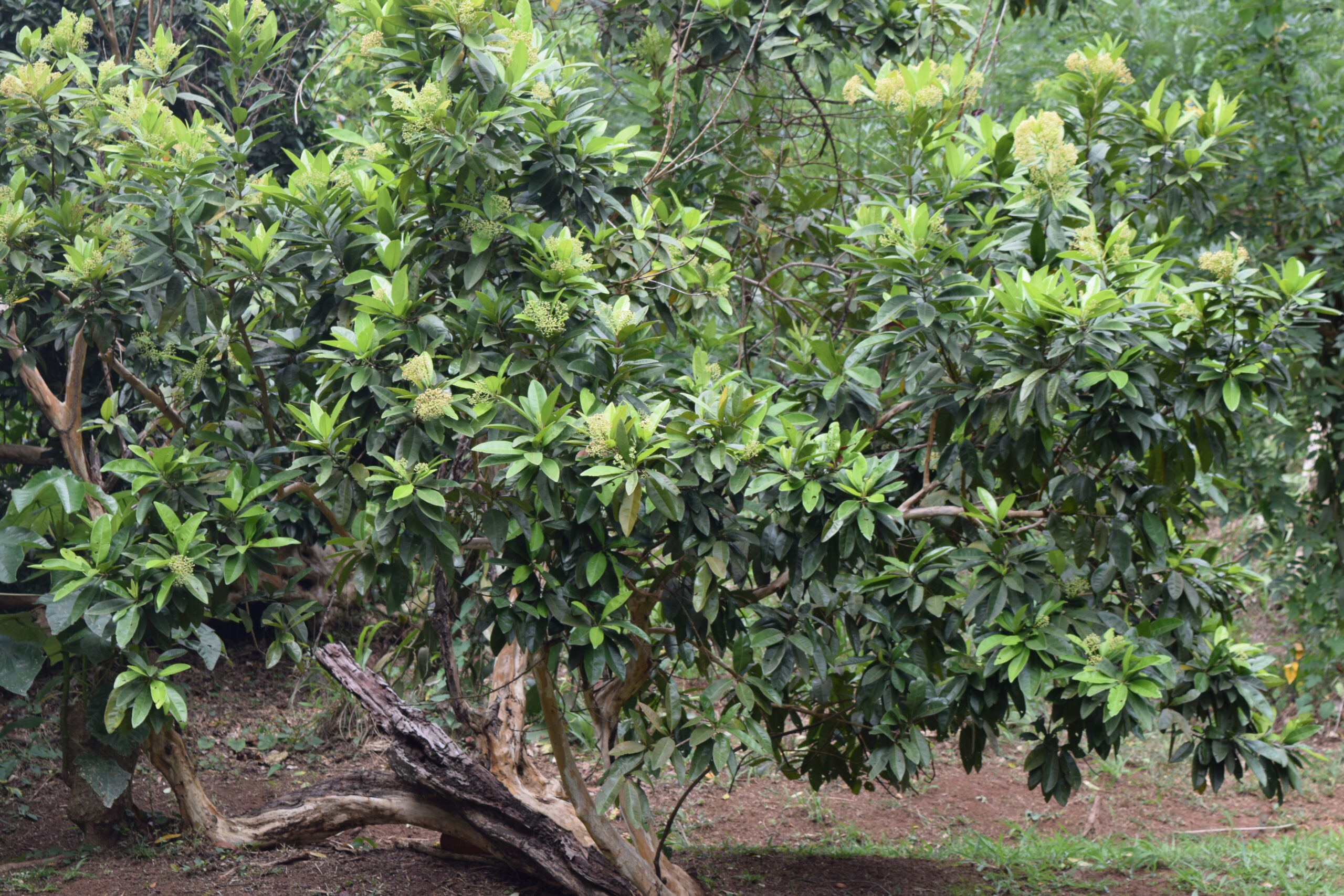


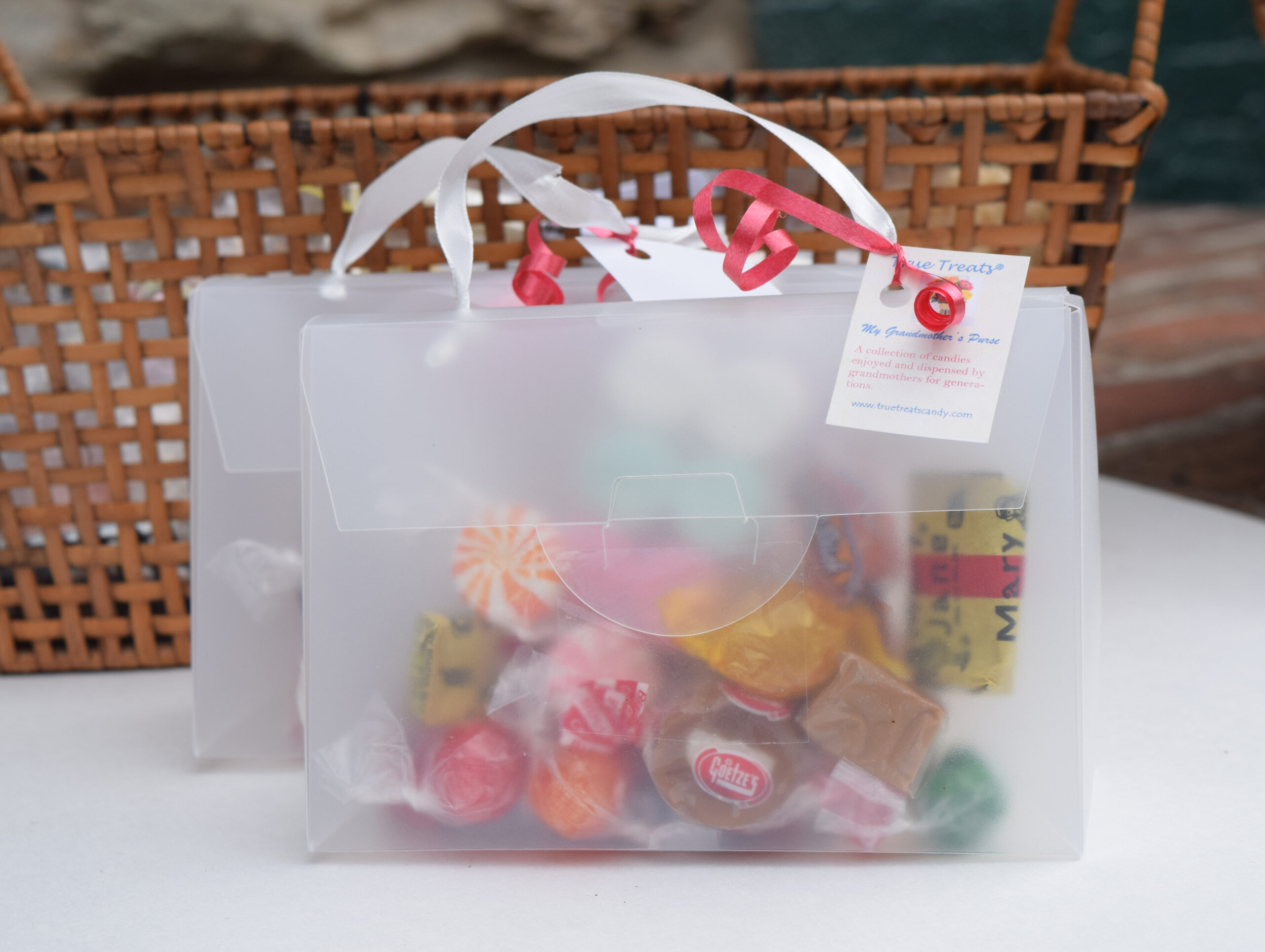
 Candy serves many purposes – a reward, pick-me-up, breath-freshener, and symbol such as the candy cane and Easter chocolate eggs. But none is so embedded with meaning on an everyday level as the hard candies that grandmothers’ kept in their candy bowls at home or their purses, dispensing them to children and, above all, grandchildren.
Candy serves many purposes – a reward, pick-me-up, breath-freshener, and symbol such as the candy cane and Easter chocolate eggs. But none is so embedded with meaning on an everyday level as the hard candies that grandmothers’ kept in their candy bowls at home or their purses, dispensing them to children and, above all, grandchildren.


